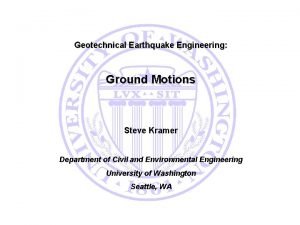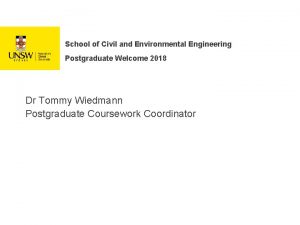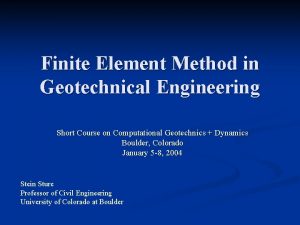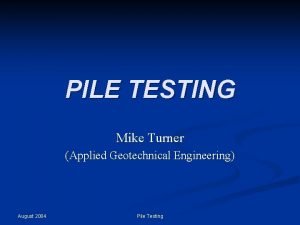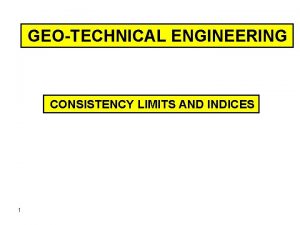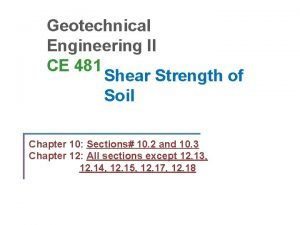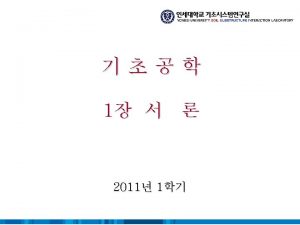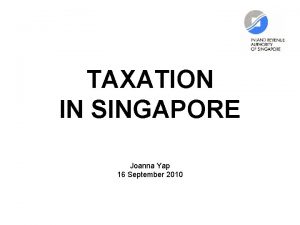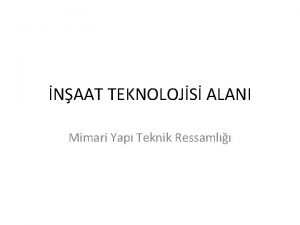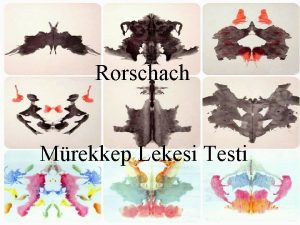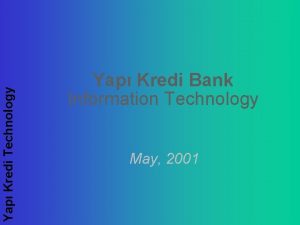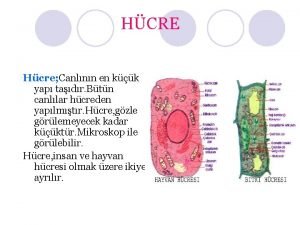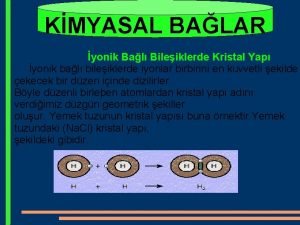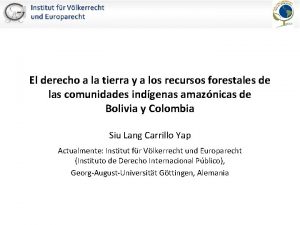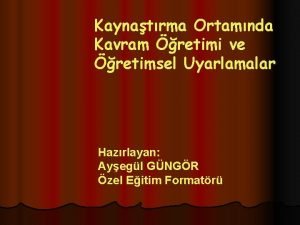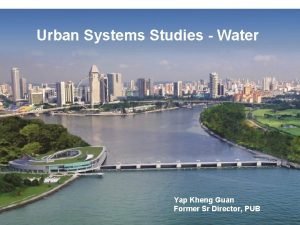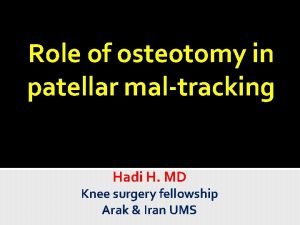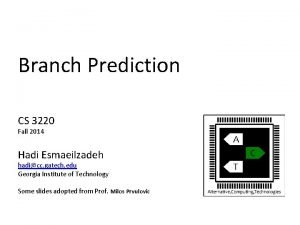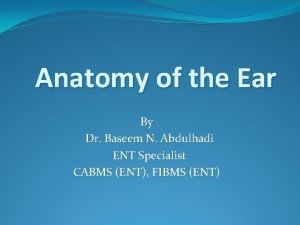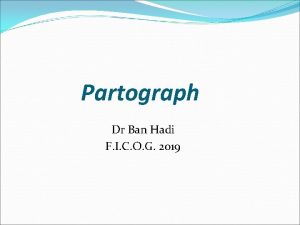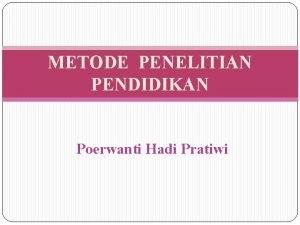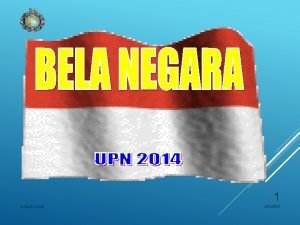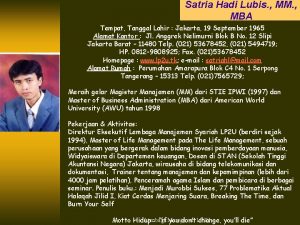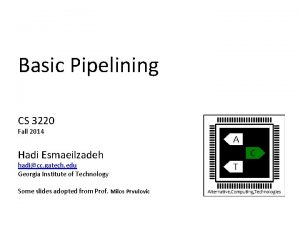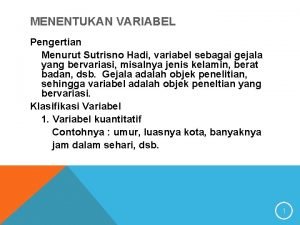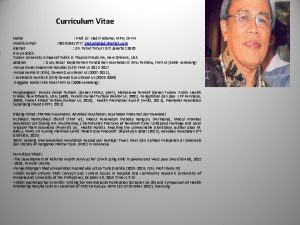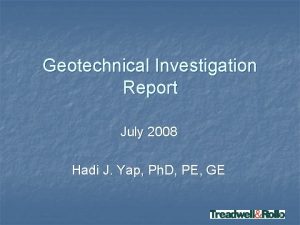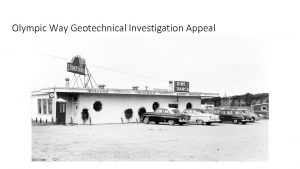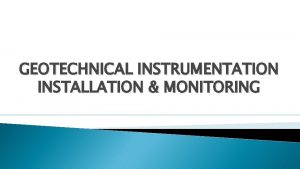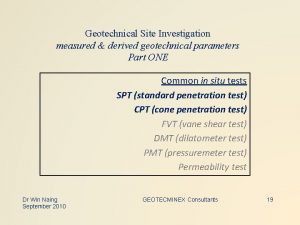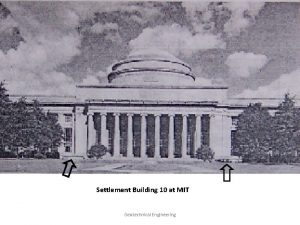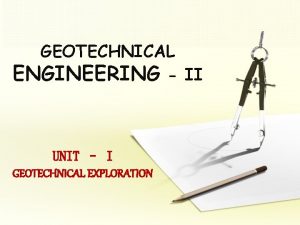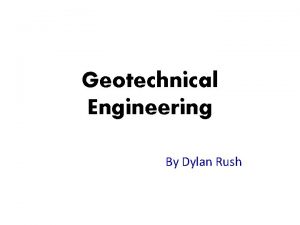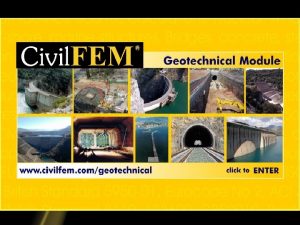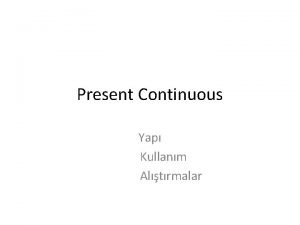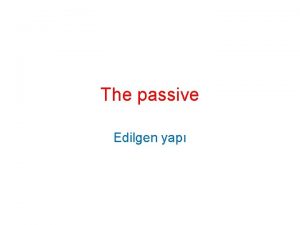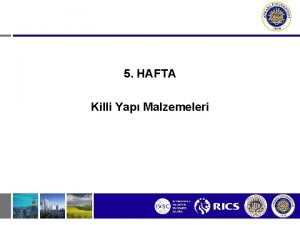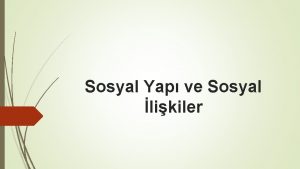Geotechnical Investigation Report July 2008 Hadi J Yap









































- Slides: 41

Geotechnical Investigation Report July 2008 Hadi J. Yap, Ph. D, PE, GE 1

Table of Contents 1. 0 2. 0 3. 0 4. 0 5. 0 Introduction Scope of Services Field Investigation Laboratory Testing Geology and Seismicity 5. 1 5. 2 5. 3 6. 0 regional geology regional seismicity and faulting geologic hazards site conditions subsurface conditions Discussions and Conclusions 7. 1 7. 2 7. 3 7. 4 7. 5 foundation support groundwater excavation dewatering shoring and underpinning Recommendations 8. 1 8. 2 8. 3 8. 4 8. 5 8. 6 8. 7 8. 8 8. 9 8. 10 8. 11 8. 12 8. 13 Site Conditions 6. 1 6. 2 7. 0 8. 0 mat foundation pile foundation below-grade walls basement floors seismic design site preparation excavation dewatering shoring earthwork utilities construction monitoring site drainage 9. 0 Additional Geotechnical Services 10. 0 Limitations 2

Introduction Present our understanding of the project: n Site: location, size, conditions n building type, number of stories and basements, column loads n Site grading/fill to be placed n additional elements of the project (retaining walls, parking areas, etc. ) 3

Scope of Services n. Field exploration n. Laboratory testing n. Engineering n. Develop analysis conclusions and recommendations regarding: n soil and groundwater conditions at the site n the most appropriate foundation type(s) for the structure n estimates of foundation settlement n lateral earth pressures for the design of permanent and temporary below-grade walls n site seismicity and seismic hazards, including ground rupture, liquefaction, lateral spreading and differential compaction n San Francisco Building Code seismic design parameters n subgrade preparation n criteria for fill, quality, placement and compaction n pavement design n construction considerations 4

Field Investigation n Evaluate existing data n T&R database n city records n geologic maps n historic maps n Perform site reconnaissance n Develop field investigation program: n test pits n dynamic cone penetrometer tests n test borings n Cone Penetration Tests (CPTs) 5

United States Coast Survey Map - February 1852 6

7

Laboratory Testing n Geotechnical parameters index testing for classification n shear strength n compressibility n R-value (for pavement design) n n Corrosivity 8

Site Conditions n n Describe site history, if known n reclamation history n past development n previous grading Describe existing conditions n surface conditions n existing site use n known obstructions 9

Subsurface Conditions n Describe soil encountered thickness n density/strength n compressibility n n Groundwater conditions 10

Typical Stratigraphic Layers n Fill n Dune Sand n Bay Mud n Colma Formation n Old Bay Clay n Franciscan Complex Bedrock 11

12

Typical Stratigraphic Layers n Fill n Heterogeneous soil consisting of: sands, clays, silts, gravels, construction debris n Engineered fill or not? n If not-engineered fill, can not be relied upon for foundation support 13

Typical Stratigraphic Layers n Dune Sand n clean fine-grained sand, wind-blown deposit n covers the majority of San Francisco n Typically loose in upper 10’ n Typically medium dense, 10’ to 30’ n Typically dense below 30’ 14

Typical Stratigraphic Layers n Bay Mud n consists of clay and silt with occasional sand lenses and organic material n relatively low strength material n relatively compressible material n If underlain by new fill, it could settle, causing downdrag on piles 15

Typical Stratigraphic Layers n Colma Formation n consists predominantly of sands with occasional clay lenses n typically contains between 0 to 20% silt/clay n relatively strong material n relatively incompressible material n excellent foundation support 16

Typical Stratigraphic Layers n Old Bay Clay n consists of stiff to hard overconsolidated clay n may contain sand gravel lenses n relatively strong n moderately compressible 17

Typical Stratigraphic Layers n Franciscan Complex bedrock n deformed bedding planes and shear zones due to seismic activity n highly variable hardness & strength n moderately to highly weathered n Relatively strong and incompressible n excellent foundation support 18

Geology and Seismicity n Regional Geology n Seismicity & Faulting n n distance to faults Geologic Hazards n n n ground shaking liquefaction lateral spreading landsliding tsunami 19

Discussion, Conclusions & Recommendations n Discussion & Conclusions discuss issues, alternatives, implications n conclude foundations type and settlement, shoring, soil improvement n n Recommendations n provide recommendations regarding the geotechnical aspects of the project 20

Settlement n Consolidation n n Liquefaction n n Temporary loss of shear strength in loose sand due to a rise in excess pore water pressure generated by strong seismic shaking Seismic Densification n n A slow process of squeezing water out in soft clay, resulting in denser packing of soil particles, when overlain by new fill Densification of loose sand above the water table due to ground shaking Foundation Settlement 21

Groundwater n Depth groundwater encountered n Likely fluctuations n Design 22

Ground Improvement n Stone columns n Compaction grouting n Chemical grouting n Jet grouting n Dynamic compaction 23

Foundations The most appropriate foundation type depends on: n Subsurface conditions n Building type and size n n n Site constraints n n n loading conditions basement levels noise vibrations proximity to existing improvements proximity to bay, channel Economics 24

Shallow Foundations n Footings isolated n continuous n grid (waffle) n n Mat 25

Shallow Foundations n suitable where competent material is encountered at subgrade elevation n can be used in fill where it is improved and building is small and light n mat can be used to span localized areas of nonsupport n mat can be used on softer soil in excavation where weight of structure is equal to or less than weight of soil removed 26

Deep Foundations n Piers n Piles 27

Piers n Efficient – can use one large diameter pier in lieu of several piles n Lengths can be adjusted in the field – reduce waste n Derive capacity mainly from friction n Use casing and/or drilling fluid if groundwater and/or loose soil is present 28

Driven Pile n Concrete piles are economical in Bay Area n Use where soft soil or un-documented fill is present n Can be used at sites with high groundwater table or thick Bay Mud n Fabricated at yard (concrete) – good quality control n Moderately high capacity 29

Retaining Walls n Restrained vs. Unrestrained Walls n n Drained vs. Undrained Walls n n undrained walls are designed to resist hydrostatic pressure Drainage n n Design wall pressure is higher for restrained walls drainage panels gravel drain weep holes/pipes Waterproofing n where moisture transmission is unacceptable 30

Floor Slabs n n Slab-on-grade n supported on ground n less expensive n will lose support and settle/crack if settlement occurs beneath slab Structural slab n n n supported on foundations more expensive can span areas of non-support due to liquefaction and/or settlement 31

Floor Slabs n Vapor Barrier n n typically included beneath floor slabs above the water table consists of: n n alternatives include Griffolyn T 65 -G n n 4” crushed rock 10+ mil visqueen 2” sand easier to install takes less space more expensive perform moisture emission testing prior to placement of floor covering 32

Seismic Design n Provide site class (A through F) n Provide spectral acceleration values for Maximum Considered Earthquake (MCE) and Design Earthquake (DE) 33

Seismic Design n Site Class n n n A B C D E F hard rock very dense soil and soft rock stiff soil profile soft soil profile n n liquefiable more than 10 feet of peat more than 25 feet of very high plasticity clays (PI>75) more than 120 feet of soft/medium stiff clay (Bay Mud) 34

Excavation n Allowable slopes n Shoring n Dewatering 35

Site Preparation & Earthwork n Site preparation remove pavements, organics n abandon utilities n abandon/remove old foundations n overexcavation n n Earthwork compaction requirements n acceptable fill materials n 36

Utilities n Settlement hangers n flexible connections n sleeved connections n 37

Pavements n Flexible n Rigid n Pavers pedestrian n vehicular n 38

Site Drainage n Keep water away from building n Collect all downspouts and surface water n All water should be directed to storm drain 39

Additional Geotechnical Services n Review geotechnical aspects of plans and specifications n Observation geotechnical aspects of construction confirm subsurface conditions are as expected n contractor performs work in accordance with plans and specifications n 40

Limitations n n Conclusions and recommendations are based on limited subsurface exploration We should provide observation services to check work is completed per plans, specs, and our recommendations 41
 2008 2008
2008 2008 Geotechnical data management
Geotechnical data management Geotechnical earthquake engineering kramer
Geotechnical earthquake engineering kramer Unsw 8621
Unsw 8621 Geotechnical data management
Geotechnical data management Fem geotechnics
Fem geotechnics Applied geotechnical engineering
Applied geotechnical engineering Consistency limits in geotechnical engineering
Consistency limits in geotechnical engineering Bachelor of construction management swinburne
Bachelor of construction management swinburne Geotechnical engineering
Geotechnical engineering Geotechnical engineering
Geotechnical engineering Latihan cerpen pungut
Latihan cerpen pungut Joanna yap
Joanna yap Naat mimari
Naat mimari Rocha testi nedir
Rocha testi nedir En kk
En kk Yapı kredi call center
Yapı kredi call center Emein
Emein Tadr
Tadr Kenny yap qian hu
Kenny yap qian hu Kristal yap
Kristal yap Iq skalası
Iq skalası Eba hesabı ile giriş yap
Eba hesabı ile giriş yap Yap von bing
Yap von bing Siu lang carrillo yap
Siu lang carrillo yap Turnitin giriş yap
Turnitin giriş yap Kavram analizi örnekleri
Kavram analizi örnekleri Yap kheng guan
Yap kheng guan Hadi mal
Hadi mal Hadi ahmad md
Hadi ahmad md Cs 3220 gatech
Cs 3220 gatech Middle ear ossicles
Middle ear ossicles Good morning nice to see you
Good morning nice to see you Bann hadi
Bann hadi Ruang lingkup penelitian pendidikan
Ruang lingkup penelitian pendidikan Taseer hadi
Taseer hadi Yulianto hadi
Yulianto hadi Satria hadi lubis
Satria hadi lubis Pipelinemx
Pipelinemx Penelitian menurut sutrisno hadi
Penelitian menurut sutrisno hadi Prof hadi pratomo
Prof hadi pratomo Monika i hadi
Monika i hadi


